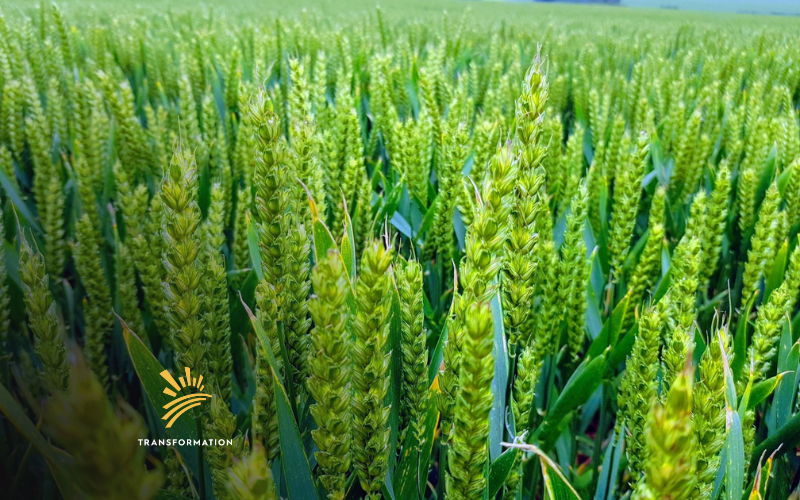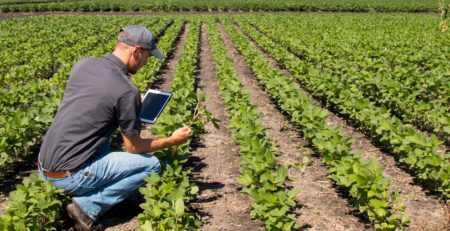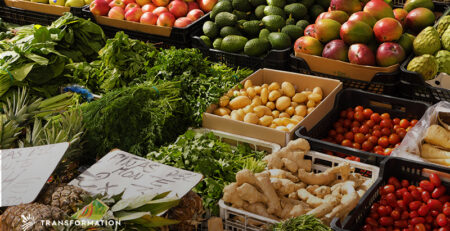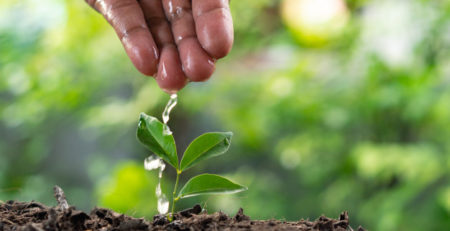5 Sustainable Farming Technologies That Make an Impact
Sustainable farming involves practices that minimize the negative environmental impacts on land, water, air, and biodiversity — it’s a mission-critical step for reducing carbon dioxide emissions. Fortunately, many modern sustainable farming technologies are being developed that can help farmers better meet their demands while also helping reduce greenhouse gas emissions. In this post, we’ll take a look at some of these innovative solutions and explore how they can help us achieve sustainability in agriculture.
The United Nations predicts that by 2050 the demand for food will increase by 70%, due to the rise in population growth that we are already experiencing. Another study by the UN concludes that over 10% of the current world population is starving. Extreme weather conditions such as droughts and heavy rainfall harm crops and reduce yields. We therefore should especially pay attention to the new technologies and innovations that have the potential to transform agriculture.
Bee Vectoring
Climate change is having an impact on the environment and therefore influences pests that live and breed mainly outdoors. Global warming is changing the survival and breeding zones of many insects and creating new challenges in agriculture. While traditional pest management often includes harmful chemicals, Bee Vectoring Technologies provides nature’s solution for upkeeping healthy crops.
It is a sustainable and natural farming practice that uses crop pollinators to deliver pest control vectors with precise efficiency while only leaving a tiny carbon footprint. The bee flies out from its hive out into the fields pollinating crops and back to the hive. Inside the hive, the bee picks up vector ID powder with its legs from the scientifically designed BVT tray. The whole process is effective, efficient and customizable to the individual needs of the farmer. This process uses substantially fewer chemicals, machinery, and greenhouse gas emissions and doesn’t require any water. However, it produces a higher yield in crops, higher quality, and improves shelf life.
Precision Agriculture
Precision agriculture is one of the newer sustainable farming technologies. It utilizes near real-time observation, measurement, and responses to manage variability in crops, fields, and animals. Its goal is to increase crop yields, save costs, and optimize process inputs to make farming more sustainable while increasing profitability. The technologies can help farmers achieve a higher crop yield while optimizing and reducing resources. Some examples of the technologies used in precision agriculture include:
- semi-automated steered vehicles
- driving systems for tractors and agricultural machinery
- satellite crop monitoring
- sensors and agricultural drones
- equipment capable of dosing fertilizers
- technology for remote fleet management.
Indoor Vertical Farming
The idea behind vertical farming is essentially taking the controlled environment of a greenhouse and stacking plants vertically on shelves inside of it to optimize the space. Vertical farming produces 10 times the yield for a given land area. It is estimated that there are already over 2000 vertical farms in the United States growing produce such as lettuce, herbs, and berries.
Another advantage of vertical farms is that they can grow all year independent of the seasons and weather conditions. However, critics point out the massive energy costs needed by such indoor vertical farms. When it comes to water usage, vertical farms use 70-95% less water than traditional outdoor farms since they are able to recollect and recycle the used water.
Water Management Technology
Water is one of the most important resources we need to survive, so logically a rise in population growth will lead to an increase in water usage. However, the earth’s water resources are limited and climate change causes severe droughts. Therefore, managing our water supply and wastewater disposal in a sustainable way is very important.
There are several new sustainable farming technologies that we should pay attention to. New techniques to desalinate seawater are very important since almost 99% of the water on earth is undrinkable for humans. Another technology manages the usage of water in huge farms with highly intelligent sensors. A very promising new technology works on combining water conservation with electric power generation, flood prevention as well as pollution control. Connecting multiple systems is essential for more sustainable water management not only in farming but also in the industry.
Ocean Farming
The idea behind regenerative ocean farming is to grow shellfish and kelp in underwater gardens to help mitigate the effects of warming waters. This creates a new regenerative economy and might be the new farming model of the future. The ocean offers endless space and the environment to farm hundreds of kinds of different shellfish and plants.
Additionally, kelp is full of nutrients such as potassium, iron, calcium, and fiber, and is already on its way to being recognized as the new superfood. Kelp is also utilized to make non-food products for farming and can be turned into plant fertilizer.
Innovation is key to building a sustainable future in agriculture, especially as demand for food increases while environmental pressures mount. By adopting cutting-edge sustainable farming technologies like those above can increase yields, reduce resource usage, and mitigate environmental impacts. Let’s work together towards a more sustainable and regenerative agricultural system that can nourish us all.





Leave a Reply